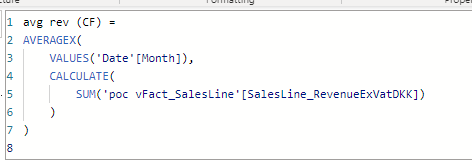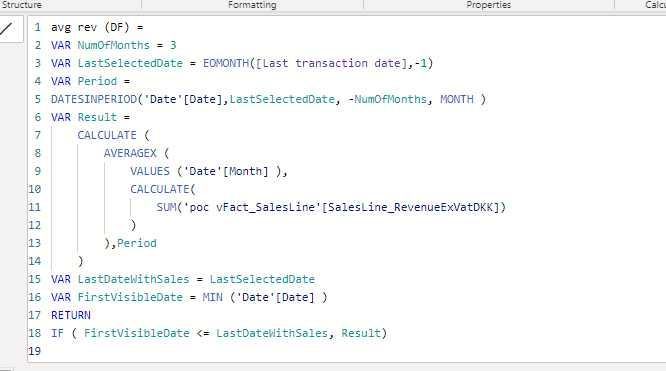FabCon is coming to Atlanta
Join us at FabCon Atlanta from March 16 - 20, 2026, for the ultimate Fabric, Power BI, AI and SQL community-led event. Save $200 with code FABCOMM.
Register now!- Power BI forums
- Get Help with Power BI
- Desktop
- Service
- Report Server
- Power Query
- Mobile Apps
- Developer
- DAX Commands and Tips
- Custom Visuals Development Discussion
- Health and Life Sciences
- Power BI Spanish forums
- Translated Spanish Desktop
- Training and Consulting
- Instructor Led Training
- Dashboard in a Day for Women, by Women
- Galleries
- Data Stories Gallery
- Themes Gallery
- Contests Gallery
- QuickViz Gallery
- Quick Measures Gallery
- Visual Calculations Gallery
- Notebook Gallery
- Translytical Task Flow Gallery
- TMDL Gallery
- R Script Showcase
- Webinars and Video Gallery
- Ideas
- Custom Visuals Ideas (read-only)
- Issues
- Issues
- Events
- Upcoming Events
The Power BI Data Visualization World Championships is back! Get ahead of the game and start preparing now! Learn more
- Power BI forums
- Forums
- Get Help with Power BI
- Desktop
- Filtering daterange for averagex, sumx, minx, maxx...
- Subscribe to RSS Feed
- Mark Topic as New
- Mark Topic as Read
- Float this Topic for Current User
- Bookmark
- Subscribe
- Printer Friendly Page
- Mark as New
- Bookmark
- Subscribe
- Mute
- Subscribe to RSS Feed
- Permalink
- Report Inappropriate Content
Filtering daterange for averagex, sumx, minx, maxx and stdevx
Hi all,
I am working on a rather large dataset where I want to calculate measures across the entire dataset/daterange as well as the same measures just for the latest 3 months prior to a customers last transaction date.
I've got it working just fine for finding average monthly revenue by using averagex like so:
And the same for minx, maxx, and stdevx across the entire daterange. All good and fine.
But when it comes to just looking at the last three months prior to a specific date I am unsure how to do it.
Here's my attempt so far for finding the max value:
In this case what it returns is simply the sum total for the three months specified, which is obviously not what I am looking for.
I suspect it has something to do with filter context, but I am still new to this.
Any help would be much appreciated 🙂
Solved! Go to Solution.
- Mark as New
- Bookmark
- Subscribe
- Mute
- Subscribe to RSS Feed
- Permalink
- Report Inappropriate Content
For anyone curious or with the same problem. It seems I found the solution with the help from this video (hope it's okay to post it).
https://www.youtube.com/watch?v=ACvYaXnpyCM
It was a matter of considering it as a rolling average og adjusting the "LastSelectedDate to correspond with my own "last transaction date". It may not be the most elegant solution, but it works for now.
- Mark as New
- Bookmark
- Subscribe
- Mute
- Subscribe to RSS Feed
- Permalink
- Report Inappropriate Content
For anyone curious or with the same problem. It seems I found the solution with the help from this video (hope it's okay to post it).
https://www.youtube.com/watch?v=ACvYaXnpyCM
It was a matter of considering it as a rolling average og adjusting the "LastSelectedDate to correspond with my own "last transaction date". It may not be the most elegant solution, but it works for now.
- Mark as New
- Bookmark
- Subscribe
- Mute
- Subscribe to RSS Feed
- Permalink
- Report Inappropriate Content
Hey can you try something like this:
Measure =
var TimeFrame = -90
var LastOrderedDate = LASTDATE(Orders[OrderDate])
return
CALCULATE(Sum([ColumnName]),DATESINPERIOD(DatesTable[Date],LastOrderedDate,TimeFrame,DAY))
- Mark as New
- Bookmark
- Subscribe
- Mute
- Subscribe to RSS Feed
- Permalink
- Report Inappropriate Content
Hi @PC2790 ,
Not sure that would accomplish what I want to.
I am looking to calculate the averagex, minx, maxx, stdevx on the monthly revenue. It works just fine when I don't try to filter by date. So basically i would want the "VALUES('Date'[Month]) to only contain last three months prior to my measure [last transaction date].... i guess 🤔
MAXX(
VALUES('Date'[Month]), // <-- should only contain last three months prior to [last transaction date]
CALCULATE(AVERAGEX(SUM('poc vFact_SalesLine'[SalesLine_RevenueExVatDKK])
)
)
Helpful resources

Power BI Dataviz World Championships
The Power BI Data Visualization World Championships is back! Get ahead of the game and start preparing now!

Power BI Monthly Update - November 2025
Check out the November 2025 Power BI update to learn about new features.

| User | Count |
|---|---|
| 59 | |
| 46 | |
| 42 | |
| 23 | |
| 18 |
| User | Count |
|---|---|
| 193 | |
| 124 | |
| 101 | |
| 67 | |
| 49 |



